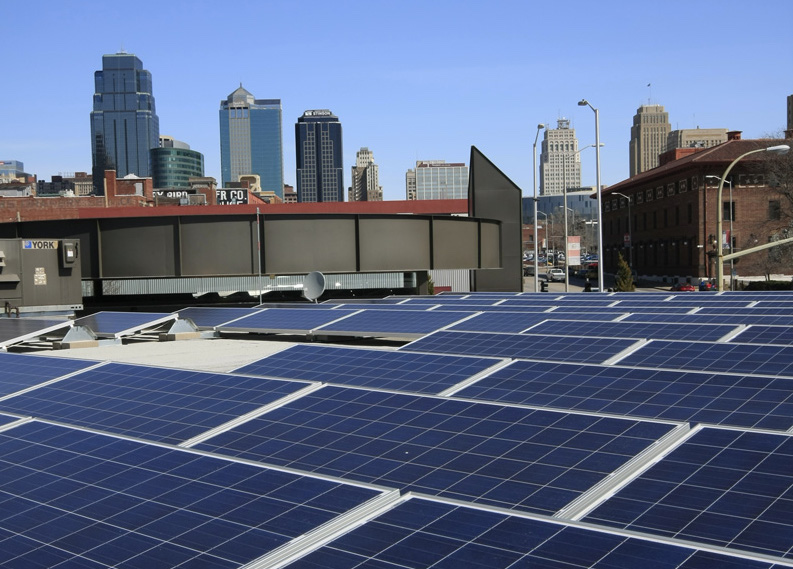The 2020 City Clean Energy Scorecard ranks the top 100 U.S. cities for clean energy efforts to tackle climate change.
New York, NY tops the list followed by Boston, MA and Seattle, WA, which are tied for second place. Kansas City, MO ranks 25th and St. Louis, MO was listed as the second-most-improved city at 28th.
The scorecard released Tuesday from the American Council for an Energy-Efficient Economy (ACEEE) analyzes the efforts of 100 major U.S. cities, which represent 19 percent of the nation’s population. Cities are ranked on efforts to make building and transportation more energy efficient and increase the use of renewable energy. The scorecard is based on data ACEEE collected from cities, utilities and publicly available sources.
The top 100 cities include: (Some cities tied for their position and are listed here according to the ACEEE numbered ranking.)
1.New York, NY
2.Boston, MA
2.Seattle, WA
4.Minneapolis, MN
4.San Francisco, CA
6.Washington, DC
7.Denver, CO
8.Los Angeles, CA
9.San Jose, CA
10.Oakland, CA
11.Portland, OR
12.Austin, TX
13.Chicago, IL
14.Atlanta, GA
15.Philadelphia, PA
16.St. Paul, MN
17.Sacramento, CA
18.San Diego, CA
19.Phoenix, AZ
19.Pittsburgh, PA
21.Orlando, FL
22.Chula Vista, CA
23.Hartford, CT
23.Providence, RI
25.Kansas City, MO
26.Long Beach, CA
27.Salt Lake City, UT
28.St. Louis, MO
29.Cleveland, OH
29.Columbus, OH
31.San Antonio, TX
32.Baltimore, MD
33.Grand Rapids, MI
34.Houston, TX
34.Riverside, CA
36.Cincinnati, OH
36.Las Vegas, NV
36.Milwaukee, WI
36.New Haven, CT
40.Albuquerque, NM
41.Honolulu, HI
42.Boise, ID
43.Aurora, CO
43.Buffalo, NY
43.Richmond, VA
43.Rochester, NY
43.Springfield, MA
48.Dallas, TX
48.Louisville, KY
50.Worcester, MA
51.Knoxville, TN
51.Miami, FL
51.New Orleans, LA
51.St. Petersburg, FL
55.Detroit, MI
55.Oxnard, CA
55.Raleigh, NC
58.Nashville, TN
58.Reno, NV
60.Bakersfield, CA
60.Fresno, CA
62.Des Moines, IA
62.Indianapolis, IN
64.Madison, WI
65.Charlotte, NC
66.Fort Worth, TX
66.Stockton, CA
68.Bridgeport, CT
68.Tucson, AZ
70.Memphis, TN
70.Syracuse, NY
72.Colorado Springs, CO
72.Virginia Beach, VA
74.Jacksonville, FL
75.Tampa, FL
76.Mesa, AZ
76.Newark, NJ
78.Omaha, NE
79.Toledo, OH
80.El Paso, TX
81.Dayton, OH
82.Lakeland, FL
83.Akron, OH
83.Winston-Salem, NC
85.Tulsa, OK
86.Allentown, PA
86.Henderson, NV
88.Birmingham, AL
89.Charleston, SC
89.Greensboro, NC
91.Columbia, SC
91.Little Rock, AR
93.Cape Coral, FL
93.Provo, UT
95.McAllen, TX
96.San Juan, PR
97.Baton Rouge, LA
97.Oklahoma City, OK
99.Wichita, KS
100.Augusta, GA
The assessment for Kansas City, MO can be found here. The report does not include updates showing that Kansas City has actually exceeded its 2020 greenhouse gas reduction target for local government operations, achieving a 40-percent reduction by 2017. Additionally, the city-wide greenhouse gas reduction target for 2020 is 30 percent reduction, not 25 percent referenced in the assessment. Kansas City achieved 21 percent city-wide reduction, said Jerry Shechter, sustainability coordinator for the Kansas City MO Office of Environmental Quality.
To see the complete report and a city-by-city assessment, go to City Clean Energy Scorecard.
The scorecard report states that it assesses policies adopted by May 1, 2020, taking into consideration the public health and economic impacts resulting from COVID-19. Additionally, it considers that city policy priorities could have shifted due to the growing concerns over racial disparities and its impacts on communities of color. The report proposes that as cities focus on economic recovery from COVID-19, energy efficiency and renewable energy remain a crucial strategy for creating jobs and keeping investment within local communities. It also concludes that a closer focus on equitable planning and investment could provide benefits that have historically been unavailable to communities of color.
“Many cities are really seizing the moment and embracing policies that help them fight climate change, while too many others are, frankly, doing very little,” said David Ribeiro, director of ACEEE’s local policy program and the lead report author. “We want to show all the cities, even the leaders, the further steps they can take to cut carbon emissions most effectively and equitably.”





